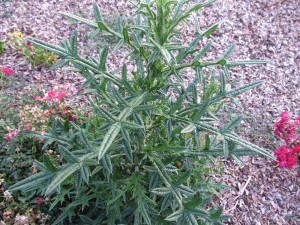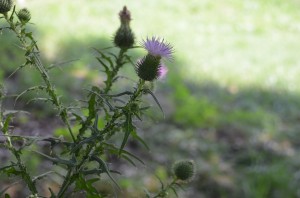Some weeds are very nasty and on top of my list are the dreadful thistles. Learn the lifecycles of those in your region and the proper method to eliminate them.
Canada thistle (Cirsium arvense) is a perennial species found in many areas of the eastern U.S. Other thistles in my region are bull and Russian thistles that are biennials. Male and female flowers of Canada thistle are found on separate plants, while flowers of other thistles are on the same plant.
Thistles often get their start in abandoned city lots and in uncultivated farm fields. When ready, ripe seed pods may release hundreds of windblown seeds that land in your garden or mine. One Russian thistle (Salsola tragus) plant may produce over 200,000 seeds. In residential areas it usually is an uncaring neighbor or absentee landowner who allows thistles to spread.
If you do not catch them early on, it may take years to get rid of them. Here are four methods of managing thistle infestations:.
Method #1: Never Let Them Seed. Prevent thistles from forming flowers. Cut them off with a mower, hoe, or weed whacker. Frequent mowing prevents mature seed heads from forming. This is particularly effective against biennial species.
Method #2: Dig out the root. If only a few thistle plants, dig up the entire root system which may extend deep into the soil. Broken secondary roots can produce new plants. This method is impractical for large infestations.
Method #3: Herbicides. Apply a non-selective broadleaf herbicide to the entire area. Warning: all vegetation (good and bad) will die. This method is most effective against large infestations.
- Apply herbicides when thistles are actively growing, when outdoor temperatures are between 65 and 85º F.
- Phenoxy herbicides include these ingredients: MSMA, dicamba, MCPA, and 2,4-D. Tradename products like WeedB-Gone™ and Trimec™, containing 2 or 3 ingredients, work best with multiple applications every 2-3 weeks.
- Glyphosate (Roundup™) may be applied to individual thistle plants by swabbing with a paint brush or sponge.
Method #4: Pasture Management. Let horses, goats and sheep to graze on certain thistle species.
Additional notes: Some thistle species are listed as invasive in parts of the U.S.. Canada thistle is a valued nectar food source for larvae (caterpillars) of the Painted Lady butterfly.



 Posted in
Posted in 
